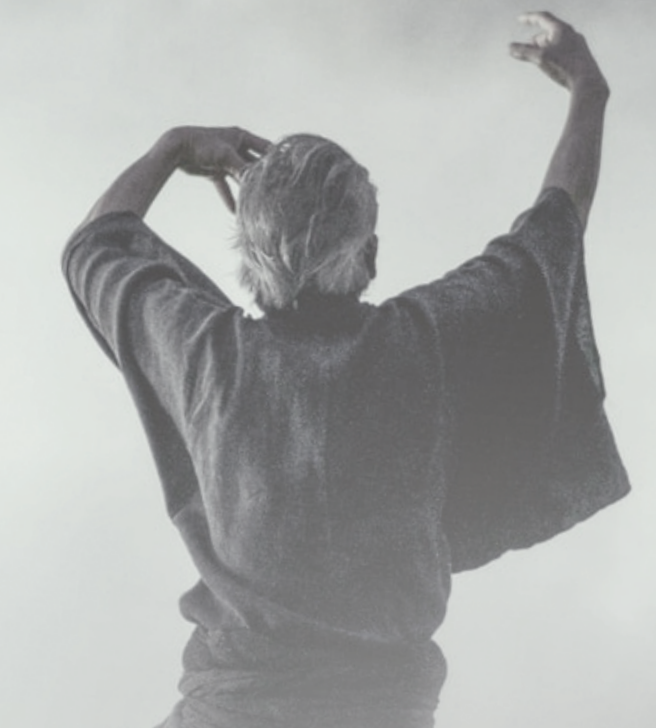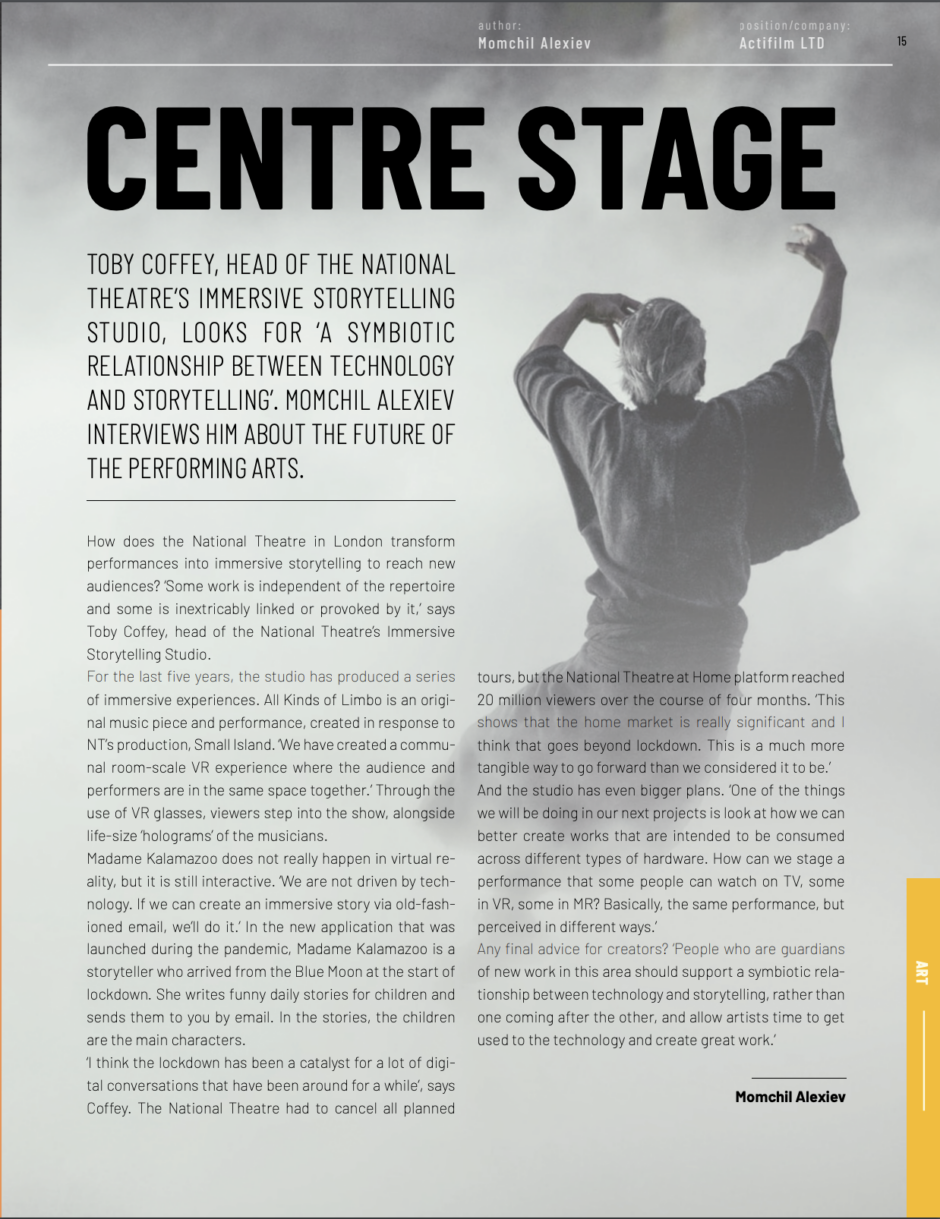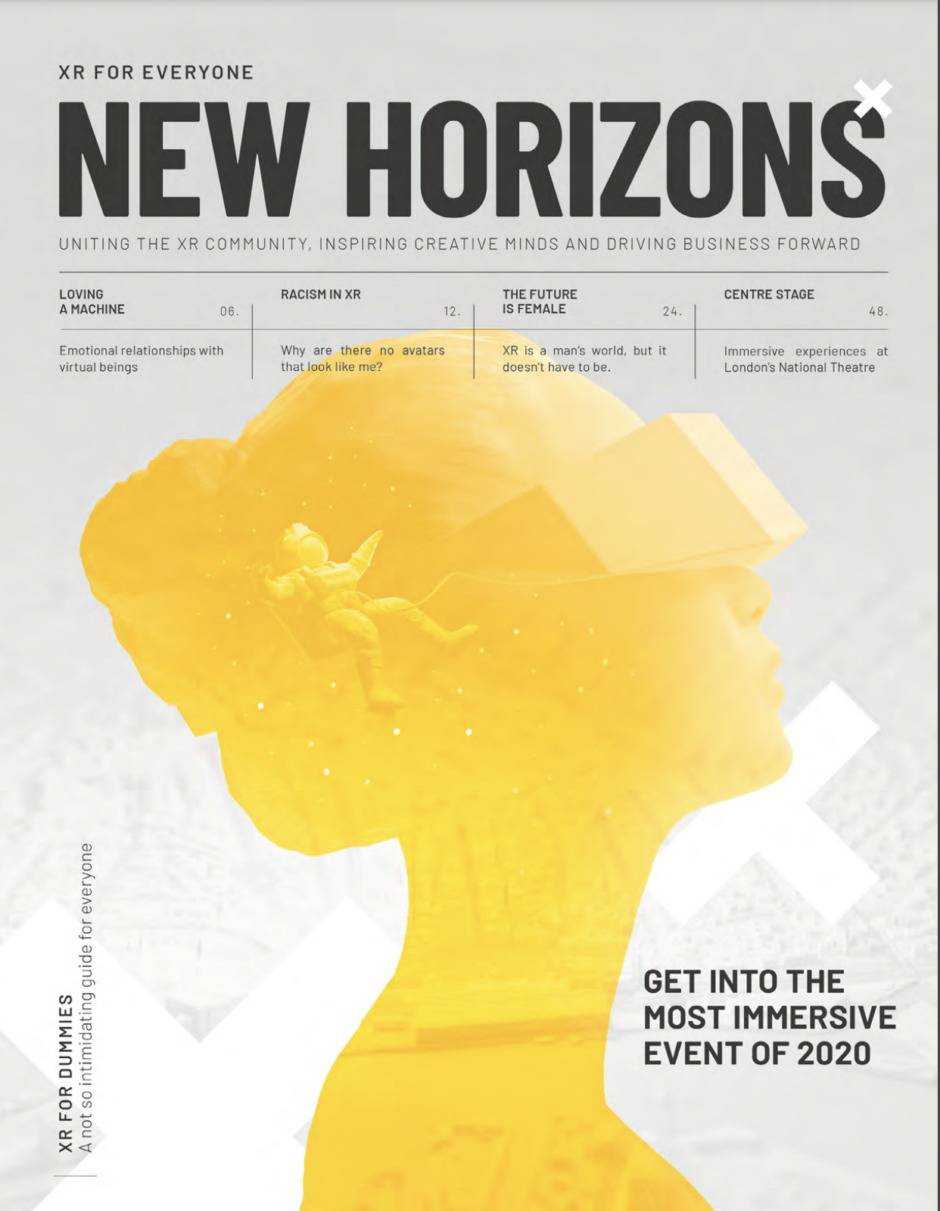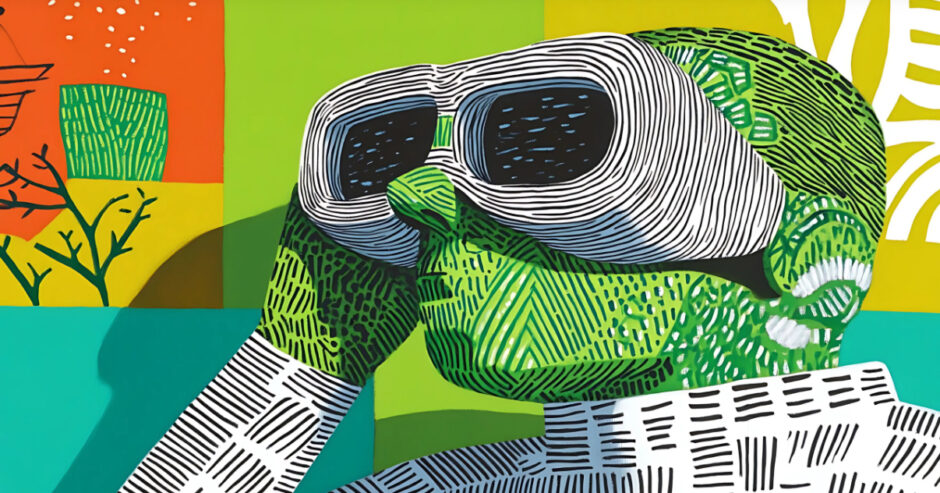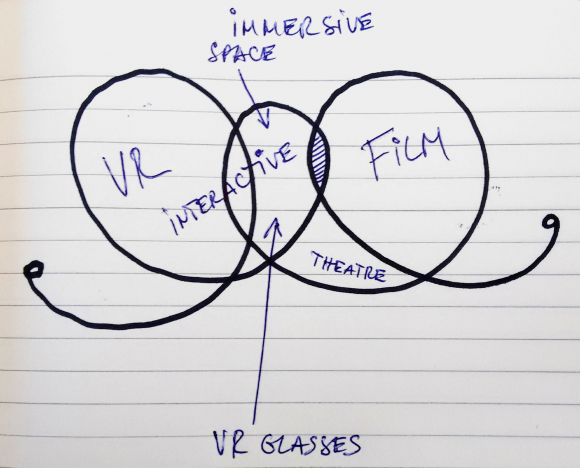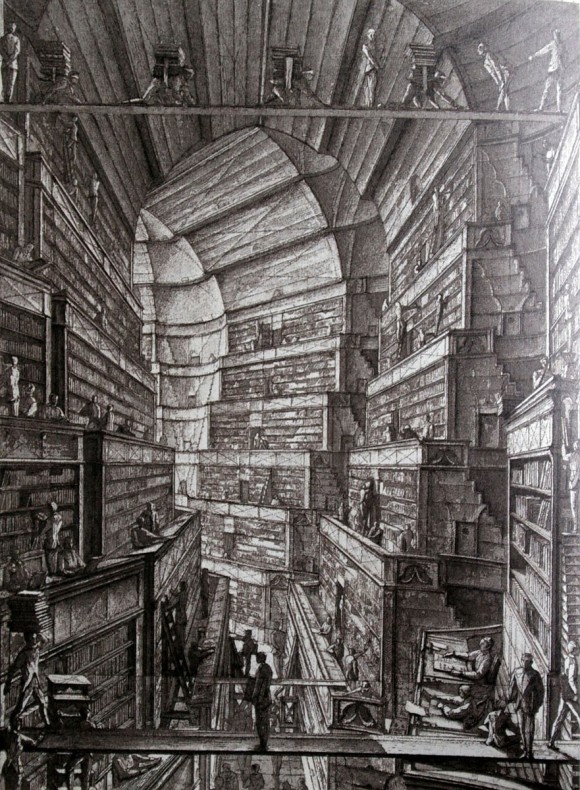CENTRE STAGE
TOBY COFFEY, HEAD OF THE NATIONAL THEATRE’S IMMERSIVE STORYTELLING STUDIO, LOOKS FOR ‘A SYMBIOTIC RELATIONSHIP BETWEEN TECHNOLOGY AND STORYTELLING’. MOMCHIL ALEXIEV INTERVIEWS HIM ABOUT THE FUTURE OF THE PERFORMING ARTS.
How does the National Theatre in London transform performances into immersive storytelling to reach new audiences?
‘Some work is independent of the repertoire and some is inextricably linked or provoked by it,’ says Toby Coffey, head of the National Theatre’s Immersive Storytelling Studio. For the last five years, the studio has produced a series of immersive experiences. All Kinds of Limbo is an original music piece and performance, created in response to NT’s production, Small Island.
‘We have created a communal room-scale VR experience where the audience and performers are in the same space together.’ Through the use of VR glasses, viewers step into the show, alongside life-size ‘holograms’ of the musicians. Madame Kalamazoo does not really happen in virtual reality, but it is still interactive. ‘We are not driven by technology. If we can create an immersive story via old-fashioned email, we’ll do it.’ In the new application that was launched during the pandemic, Madame Kalamazoo is a storyteller who arrived from the Blue Moon at the start of lockdown. She writes funny daily stories for children and sends them to you by email. In the stories, the children are the main characters. ‘I think the lockdown has been a catalyst for a lot of digital conversations that have been around for a while’, says Coffey. The National Theatre had to cancel all planned tours, but the National Theatre at Home platform reached 20 million viewers over the course of four months. ‘This shows that the home market is really significant and I think that goes beyond lockdown. This is a much more tangible way to go forward than we considered it to be.’ And the studio has even bigger plans. ‘One of the things we will be doing in our next projects is look at how we can better create works that are intended to be consumed across different types of hardware.’
How can we stage a performance that some people can watch on TV, some in VR, some in MR?
Basically, the same performance, but perceived in different ways.’
Any final advice for creators?
‘People who are guardians of new work in this area should support a symbiotic relationship between technology and storytelling, rather than one coming after the other, and allow artists time to get used to the technology and create great work.”
NEW HORIZONS Magazine download link:
https://www.christopherlafayette.com/wp-content/uploads/2020/11/magazine_vrdays_2020.pdf
